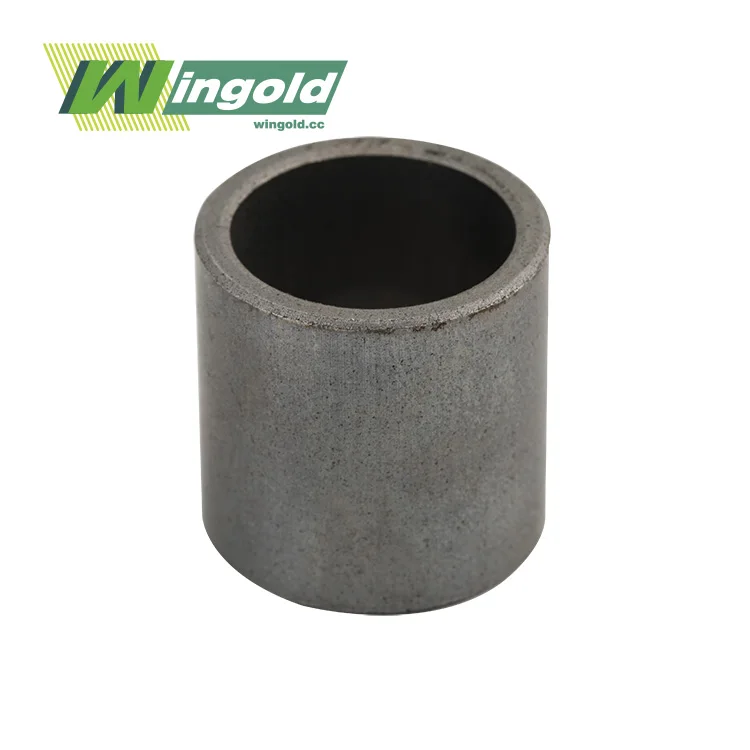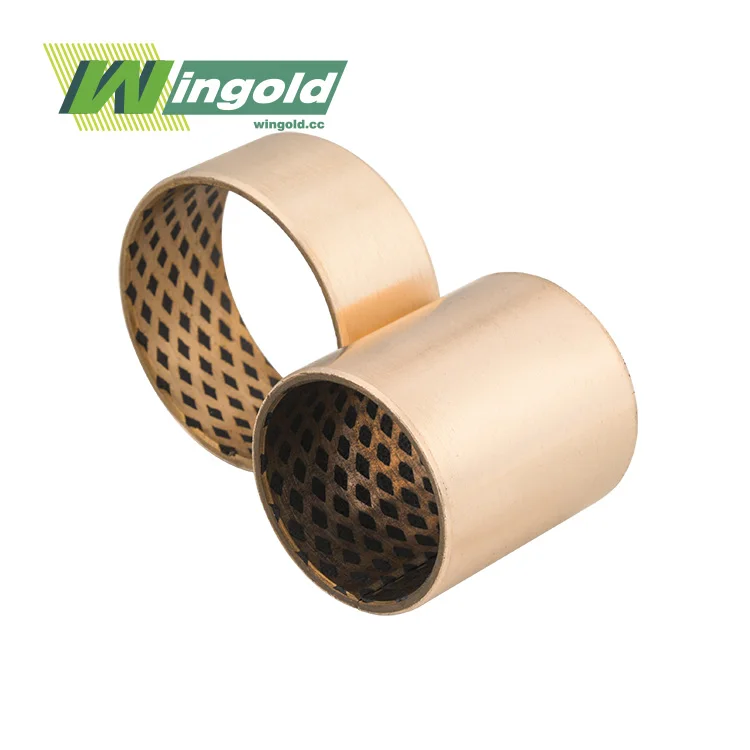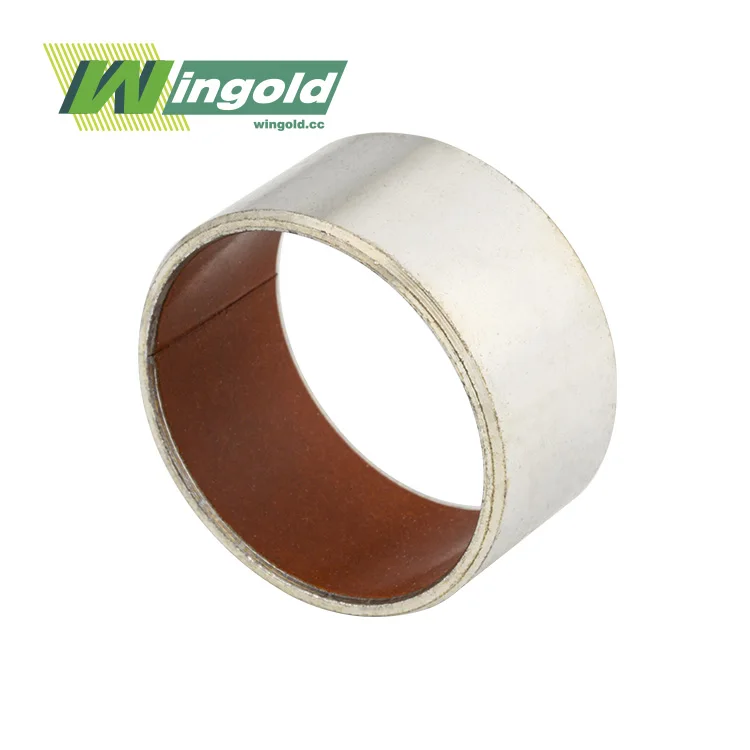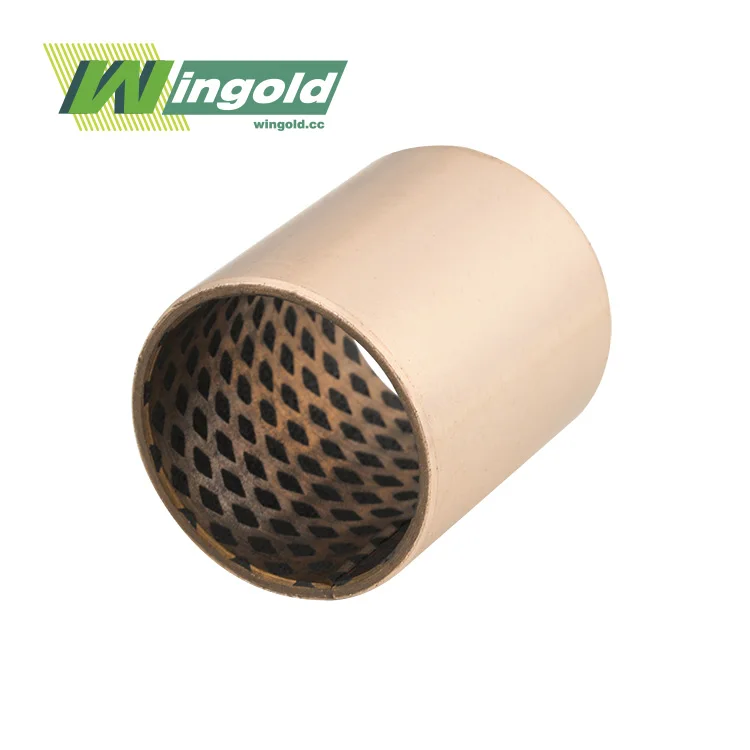
The Science Behind Bimetallic Bushing Sleeves
Bimetallic bushing sleeves are engineered marvels that leverage the unique properties of different metals to create a superior corrosion-resistant component. The core of these bushings typically consists of a steel backing, providing the necessary strength and structural support. This steel core is then bonded with a layer of corrosion-resistant alloy, such as bronze or aluminum-based materials.
The manufacturing process of bimetallic bushing sleeves is crucial to their performance. Advanced techniques like centrifugal casting and sintering are employed to ensure a strong metallurgical bond between the steel backing and the corrosion-resistant layer. This bond is essential for preventing delamination and ensuring the longevity of the bushing in corrosive environments.
Material Selection for Optimal Corrosion Resistance
The choice of materials for the corrosion-resistant layer is paramount in determining the bushing's performance in extreme conditions. Common alloys used include:
- Bronze alloys (e.g., CuSn8, CuPb10Sn10): These offer excellent corrosion resistance in marine and industrial environments.
- Aluminum alloys (e.g., AlSn20, AlSn40): Ideal for applications requiring both corrosion resistance and lightweight properties.
- Specialized copper alloys (e.g., CuPb24Sn4, CuPb30): Tailored for specific corrosive environments and operating conditions.
The selection of these materials is based on factors such as the specific corrosive agents present, operating temperatures, and load requirements. For instance, in marine applications where saltwater corrosion is a concern, bronze alloys with high tin content may be preferred for their superior resistance to chloride-induced corrosion.
Performance Advantages in Corrosive Environments
Bimetallic bushing sleeves offer significant advantages in industrial environments where corrosion is a critical concern. Their design typically combines a high-strength steel backing with a corrosion-resistant alloy lining, creating a component that is both durable and protective. This dual-layer structure ensures mechanical strength from the steel while providing a shield against chemical attack from the alloy surface. Such synergy is especially beneficial in industries like offshore engineering, marine applications, and mining, where equipment is continuously exposed to corrosive agents. The unique construction makes these bushings reliable choices for operations under extreme and demanding environmental conditions.
Corrosion Resistance and Durability
The outstanding corrosion resistance of bimetallic bushing sleeves plays a crucial role in protecting machinery from chemical degradation. The corrosion-resistant outer alloy acts as a barrier against harsh agents, effectively safeguarding the steel core from structural failure. This layered protection not only extends service life but also reduces maintenance needs and unplanned downtime, improving operational efficiency. Furthermore, durability goes beyond corrosion resistance. The steel backing offers high load-bearing capacity, while the alloy lining withstands abrasion and wear. This dual-functionality is vital in industries like oil and gas, construction, and mining, where components face simultaneous mechanical stress and chemical attack.
Thermal Management and Dimensional Stability
Another notable advantage of bimetallic bushing sleeves is their ability to manage heat and maintain dimensional stability. The steel backing works as a natural heat sink, dispersing thermal energy and preventing localized overheating, which can otherwise lead to premature failure. This property is critical in applications where equipment is subject to frequent temperature fluctuations, ensuring smooth and stable operation. Additionally, the careful pairing of alloys with compatible thermal expansion coefficients prevents deformation and misalignment. This matching ensures that clearances remain precise, avoiding leaks, wear acceleration, or operational inefficiencies. Such thermal and dimensional stability enhances reliability in extreme industrial conditions.
Applications and Industries Benefiting from Bimetallic Bushings
The versatility and robustness of bimetallic bushing sleeves make them indispensable in a wide range of industries facing corrosive challenges. Their application spans various sectors, each benefiting from the unique properties of these engineered components.
Marine and Offshore Industries
In marine environments, where exposure to saltwater and harsh weather conditions is constant, bimetallic bushings play a crucial role. They are commonly used in:
- Ship propulsion systems
- Offshore drilling equipment
- Dock machinery and cranes
Chemical Processing and Petrochemical Industries
Chemical plants and refineries expose equipment to a variety of corrosive substances. Bimetallic bushing sleeves find extensive use in:
- Pumps and valves handling corrosive fluids
- Agitators and mixers in chemical reactors
- Pipeline systems transporting corrosive materials
Mining and Mineral Processing
The mining industry presents a dual challenge of corrosion and abrasion. Bimetallic bushings are utilized in:
- Heavy earth-moving equipment
- Crushing and grinding machinery
- Conveyor systems in corrosive environments
Conclusion
Bimetallic bushing sleeves represent a significant advancement in the fight against corrosion in extreme conditions. Their unique construction, combining the strength of steel with the corrosion resistance of specialized alloys, provides a robust solution for industries facing harsh operating environments. As industries continue to push the boundaries of material performance, bimetallic bushings stand as a testament to engineering ingenuity, offering reliability and longevity in the most challenging applications.
For more information on how bimetallic bushing sleeves can benefit your specific application or to discuss custom solutions, please contact Wingold Bearing at info@wingold.cc. Our team of experts is ready to help you combat corrosion and enhance the performance of your equipment in even the most extreme conditions.
FAQs
What makes bimetallic bushing sleeves superior to traditional bushings in corrosive environments?
Bimetallic bushing sleeves combine a strong steel backing with a corrosion-resistant alloy layer, offering superior protection against chemical attack while maintaining structural integrity.
Can bimetallic bushings withstand both high temperatures and corrosive conditions?
Yes, bimetallic bushings are designed to perform well in high-temperature, corrosive environments due to their excellent thermal management properties and carefully selected alloy compositions.
Are bimetallic bushing sleeves suitable for marine applications?
Absolutely. Their resistance to saltwater corrosion makes them ideal for various marine and offshore applications, including ship propulsion systems and offshore drilling equipment.



